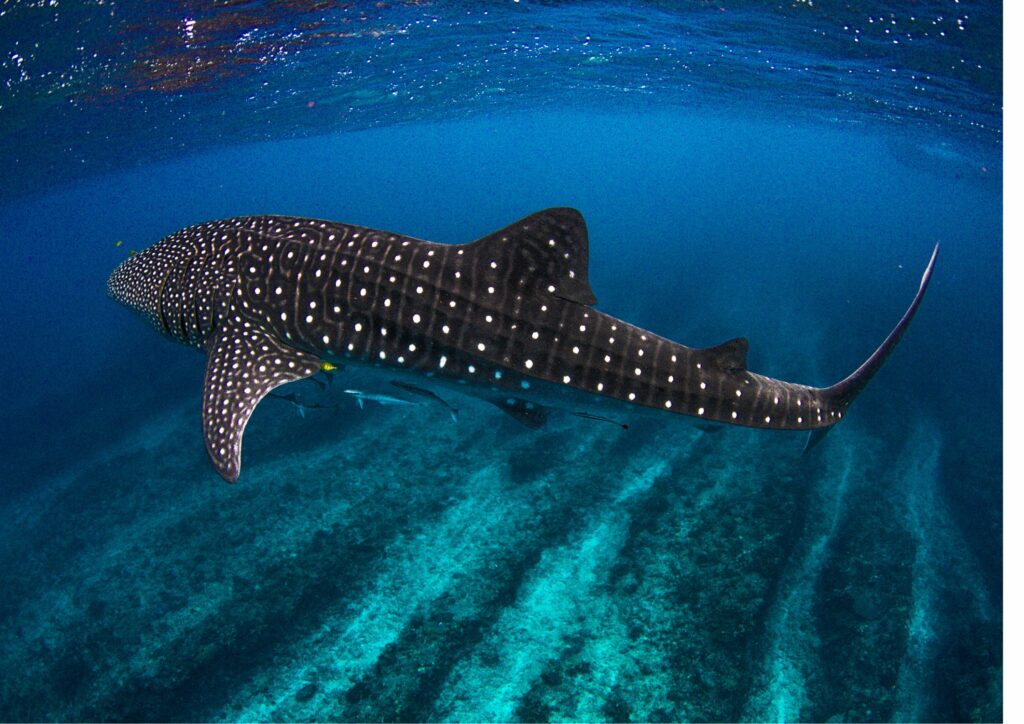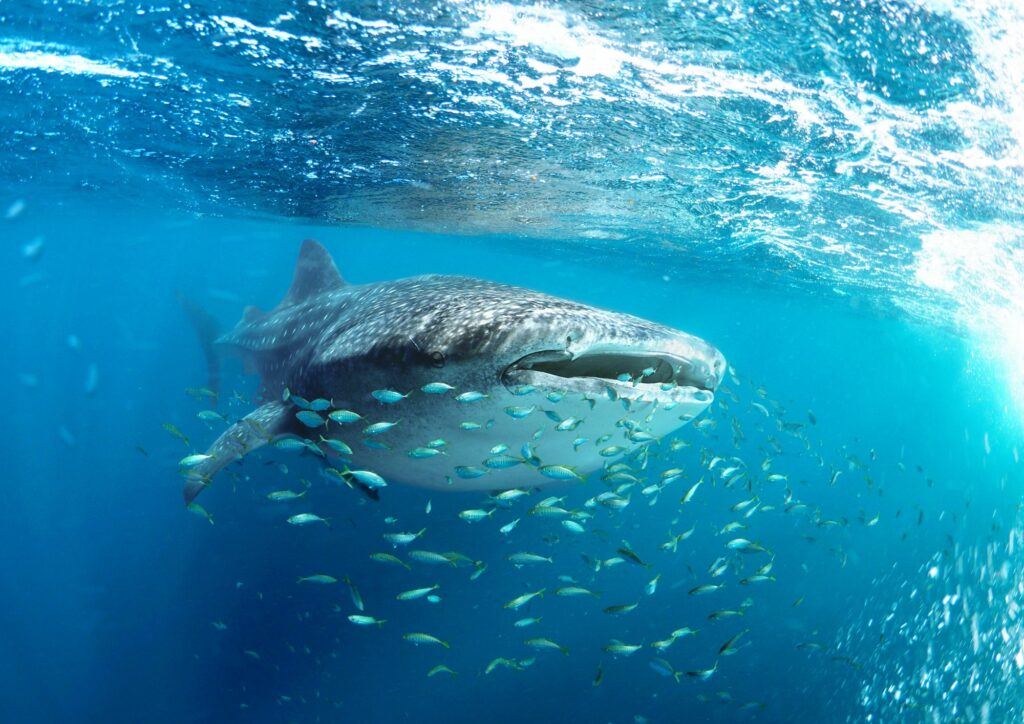Welcome to our deep dive into the fascinating world of sharks! These incredible creatures have been around for an astonishing 455 million years, evolving into the diverse species we see today. Whether you’re intrigued by the striking blue hue of blue sharks or the uniqueness of each whale shark’s spot pattern, there’s so much to learn about these ancient predators. From their sandpaper-like skin to their remarkable eyesight, they captivate our imagination in countless ways. Join us as we uncover some fun facts about sharks that are sure to amaze both fans and newcomers alike.
The Ancient Giants: 455-Million-Year History
Sharks have been swimming in our oceans for an astonishing 455 million years, making them one of the oldest species on the planet. This incredible lineage predates even the dinosaurs, showcasing their adaptability and resilience through multiple mass extinctions. As an ancient species, sharks have evolved significantly over the millennia, developing traits that allow them to thrive in a variety of marine environments. Interestingly, despite their age, these fascinating creatures have remained relatively unchanged in structure, which is a testament to their successful design. The enduring presence of sharks in our oceans invites us to appreciate these awe-inspiring and ancient giants.
The Vibrant Blue: Understanding Blue Sharks
Blue sharks are famous for their striking coloration, which can be described as an intense blue along the top and a lighter shade on the belly. This vibrant hue not only makes them visually stunning but also serves a purpose in their habitat, assisting in camouflage while swimming in open waters. Did you know that blue sharks can grow up to 12 feet long? These sleek creatures are built for speed and agility, allowing them to navigate through the ocean with grace. While they may appear delicate, they are highly efficient predators. The purpose of their startling coloration and streamlined bodies showcases the incredible adaptations sharks have developed over millions of years.
Unique Patterns: Whale Sharks and Their Fingerprint-Like Spots

Whale sharks, the largest fish in the ocean, are renowned for their unique spot patterns that are as distinctive as human fingerprints. Each whale shark has a specific arrangement of spots and stripes that can be used to identify individual creatures within the species. This uniqueness is not just aesthetically pleasing; it’s also vital for researchers who study their populations and migration patterns. These gentle giants are often seen gliding gracefully through warm ocean waters, and the mesmerizing patterns on their skin can serve as camouflage against predators. Understanding these patterns helps conservation efforts aimed at protecting these magnificent creatures.
Teeth Variety: Exploring the Different Types
One fascinating aspect of sharks is the incredible variety of teeth they possess, which vary significantly across different species. For example, while some species like the great white have sharp, serrated teeth designed for cutting through flesh, others like the whale shark possess flat, molar-like teeth adapted for filter feeding on smaller creatures. Notably, sharks do not have bones; their teeth are made of cartilage, making them surprisingly lightweight yet effective. The diverse dental adaptations of sharks play a vital role in their survival and hunting strategies, illustrating the evolutionary brilliance behind these magnificent creatures.
Reproduction Mysteries: How Different Species Give Birth
The reproduction is as diverse as the species themselves, showcasing a fascinating range of methods. Some sharks, like the hammerhead, are ovoviviparous, which means they give birth to live young after the eggs hatch inside the mother. Other species, such as the tiger shark, lay eggs in a special protective casing known as a mermaid’s purse. Surprisingly, certain sharks, like the whale shark, are even known to practice a type of asexual reproduction called parthenogenesis, where females can conceive without a male. This adaptability in reproduction not only highlights the resilience of shark, but also contributes to their survival in various marine environments.
Tough Skin: The Sandpaper-Like Texture of Shark Skin

Their skin is fascinatingly unique, feeling remarkably similar to sandpaper due to its structure. Composed of tiny, tooth-like structures called dermal denticles, this tough skin not only provides protection against predators but also helps reduce drag as sharks glide through the ocean. These denticles can vary in size and shape across different shark species, contributing to their distinctive identities. Beyond its protective function, shark skin has inspired technological advancements in various fields, including medicine and manufacturing. This rough texture plays a crucial role in the survival of these ancient creatures that have been around for an astounding 455 million years.
Keen Eyesight: How Sharks See the Underwater World
The gentle giants are renowned for their keen eyesight, which plays a crucial role in how they navigate and hunt in the underwater world. Most species of sharks possess excellent vision, allowing them to detect movement from great distances, even in murky waters. Their eyes are specially adapted to see well in low light conditions and can perceive a wide range of colors.
Interestingly, shark has layer of tissue called the tapetum lucidum that enhances their ability to see in dim light, reflecting light back through the retina. This adaptation provides shark with a significant advantage, making them highly effective predators. Sharks’ incredible vision is complemented by their other senses, creating a powerful hunting toolkit that allows them to thrive in their aquatic environment.
A Cartilaginous Structure: Why The Gentle Giants Don’t Have Bones
Sharks are fascinating creatures, primarily because they belong to a unique group of fish known as cartilage fish. Unlike most animals that have bones, they are made entirely of cartilage, the same material that makes up human ears and noses. This cartilaginous structure gives a distinct evolutionary advantage, making them lighter and more flexible in the water. Without the heaviness of bones, shark can swim swiftly and efficiently, helping them become some of the most effective predators in the ocean. Additionally, this cartilage allows them to bend and twist with ease, enhancing their agility as they navigate through their underwater world.
The Fascinating World of Sharks in Bali
As we have explored throughout this blog, sharks are truly remarkable creatures that have been around for an astounding 455 million years. From the vibrant blue hues of blue sharks to the unique spot patterns of whale sharks resembling fingerprints, these awe-inspiring animals showcase the incredible diversity and adaptiveness of life in the ocean.
Their incredible features, such as the sandpaper-like texture of their skin and their exceptional eyesight, make them not only fascinating but essential to maintaining the balance in marine ecosystems. Understanding the unique characteristics of different shark species, from their reproductive methods to their varying teeth structures, further highlights the importance of conserving these ancient animals. With many sharks lacking bones and instead possessing cartilage, their evolution has equipped them uniquely for survival in the deep blue sea. Ultimately, learning more about sharks not only satisfies curiosity but also encourages respect for these amazing beasts of the sea and the ecosystems they inhabit.
The waters around Bali are a gateway to the mesmerizing world of sharks, offering an unforgettable experience for those who venture beneath the surface. Bali diving provides the chance to encounter a variety of shark species, from the elusive reef sharks to the awe-inspiring hammerheads, each playing a vital role in the marine ecosystem. These encounters are not only thrilling but also offer a deeper understanding of the importance of shark conservation.
As you explore the vibrant coral reefs and deep blue waters, you’ll gain a new appreciation for these magnificent creatures and the delicate balance they help maintain in Bali’s underwater world. Whether you’re a seasoned diver or new to the sport, the allure of shark diving in Bali is an adventure not to be missed.

Wow, I’m blown away by the adaptability and resilience of sharks! The article highlights their impressive features, from sandpaper-like skin to exceptional eyesight. As someone who’s had encounters with reef sharks in Bali, it’s amazing to think about the intricate balance they help maintain in marine ecosystems.
Dear Evelyn, we’re thrilled that you enjoyed our blog post on the fascinating world of sharks! It’s indeed awe-inspiring to see how they’ve adapted to their environments over millions of years. We’re glad to hear about your encounters with reef sharks in Bali – it’s amazing how these incredible creatures can thrive in different marine ecosystems. If you have any more questions or would like to learn more about shark conservation, please don’t hesitate to reach out to us at Tel: +65 6734 9373 or Email: [email protected]. We’re always here to help. Thanks for your enthusiasm and passion for sharks!
Fascinating article! I love learning about sharks and their incredible adaptations. It’s amazing how they’ve been around for 455 million years, adapting to different environments and evolving new features. As someone who loves diving in Bali, it’s great to know that the island is home to a variety of shark species.
Hi Leiwen, thank you for sharing your enthusiasm about sharks! We’re thrilled to hear that our article resonated with you. As a diver in Bali, you must have had some amazing experiences encountering these incredible creatures. Our team at Gill Divers is committed to promoting shark conservation and education. If you have any questions or would like to know more about our diving trips in Bali, feel free to contact us! We’re always happy to help. Tel: +65 6734 9373, Email: [email protected]
What an intriguing read! I had no idea about the unique spot patterns on whale sharks or how they reproduce. It’s fascinating to see how different shark species have evolved to thrive in their respective environments. As a marine enthusiast, I appreciate the importance of conservation efforts for these incredible creatures.
Hi Fatinah Amir, thank you for your enthusiasm and appreciation for the fascinating world of sharks! We’re glad to hear that you found our article informative and interesting. Indeed, the unique spot patterns on whale sharks are a remarkable feature that helps researchers identify individual creatures and study their populations. And yes, the different reproduction methods among shark species are just one example of how they’ve adapted to thrive in their environments. At Gill Divers, we’re committed to supporting conservation efforts for these incredible creatures, and we appreciate your shared passion. If you have any questions or would like to learn more about our diving expeditions that support shark conservation, please don’t hesitate to contact us at Tel: +65 6734 9373 or Email: [email protected]. Looking forward to hearing from you!